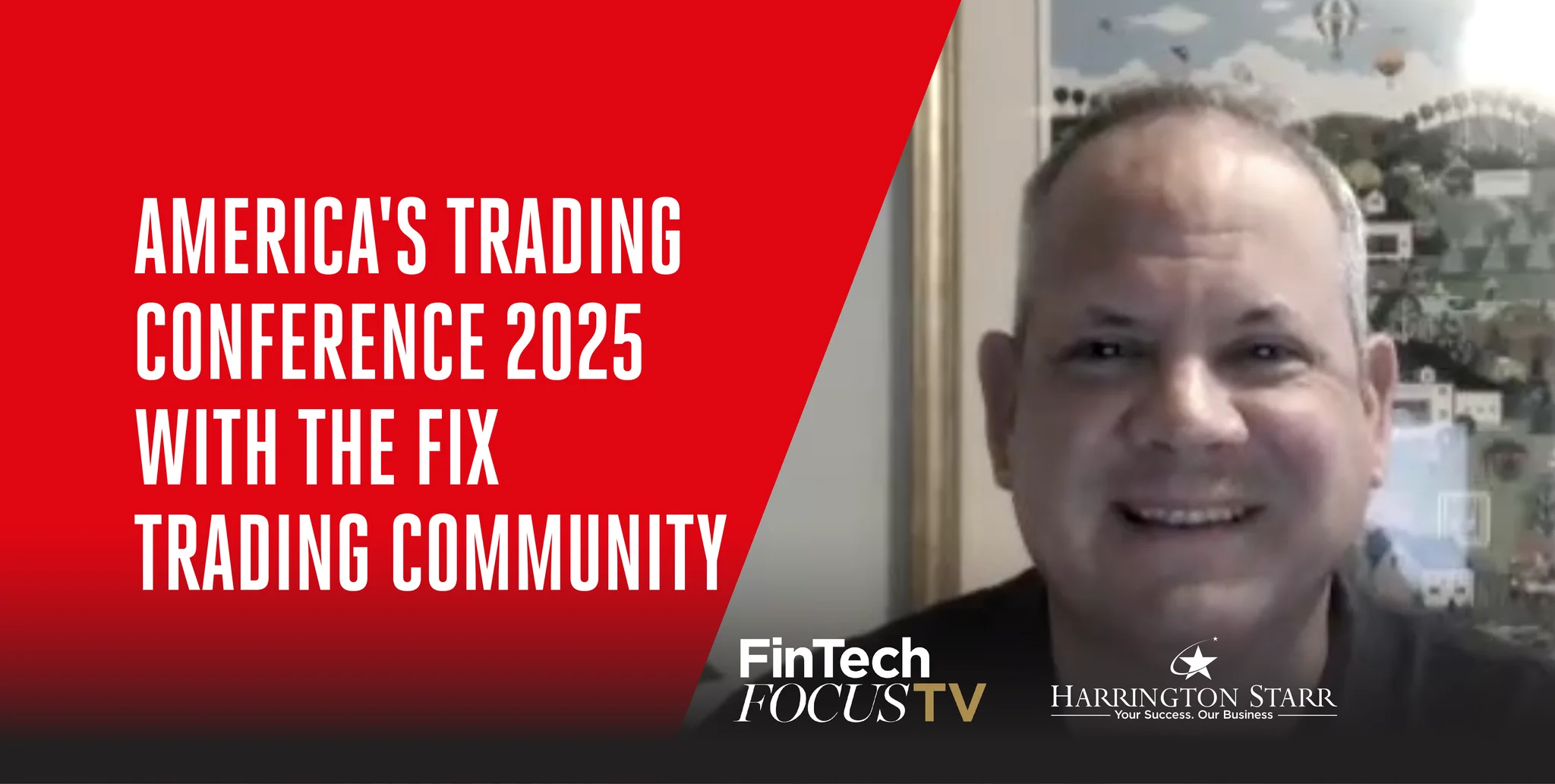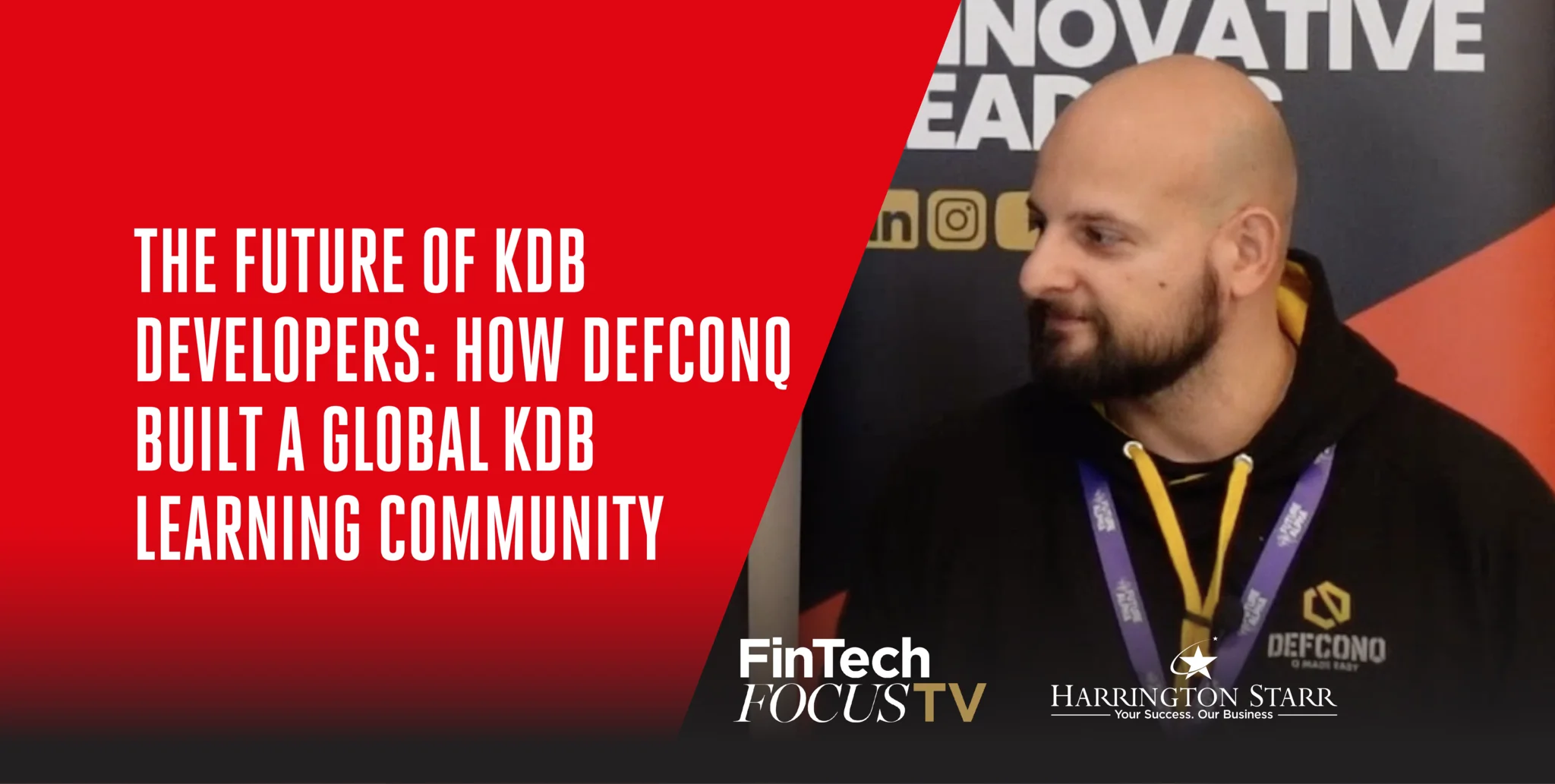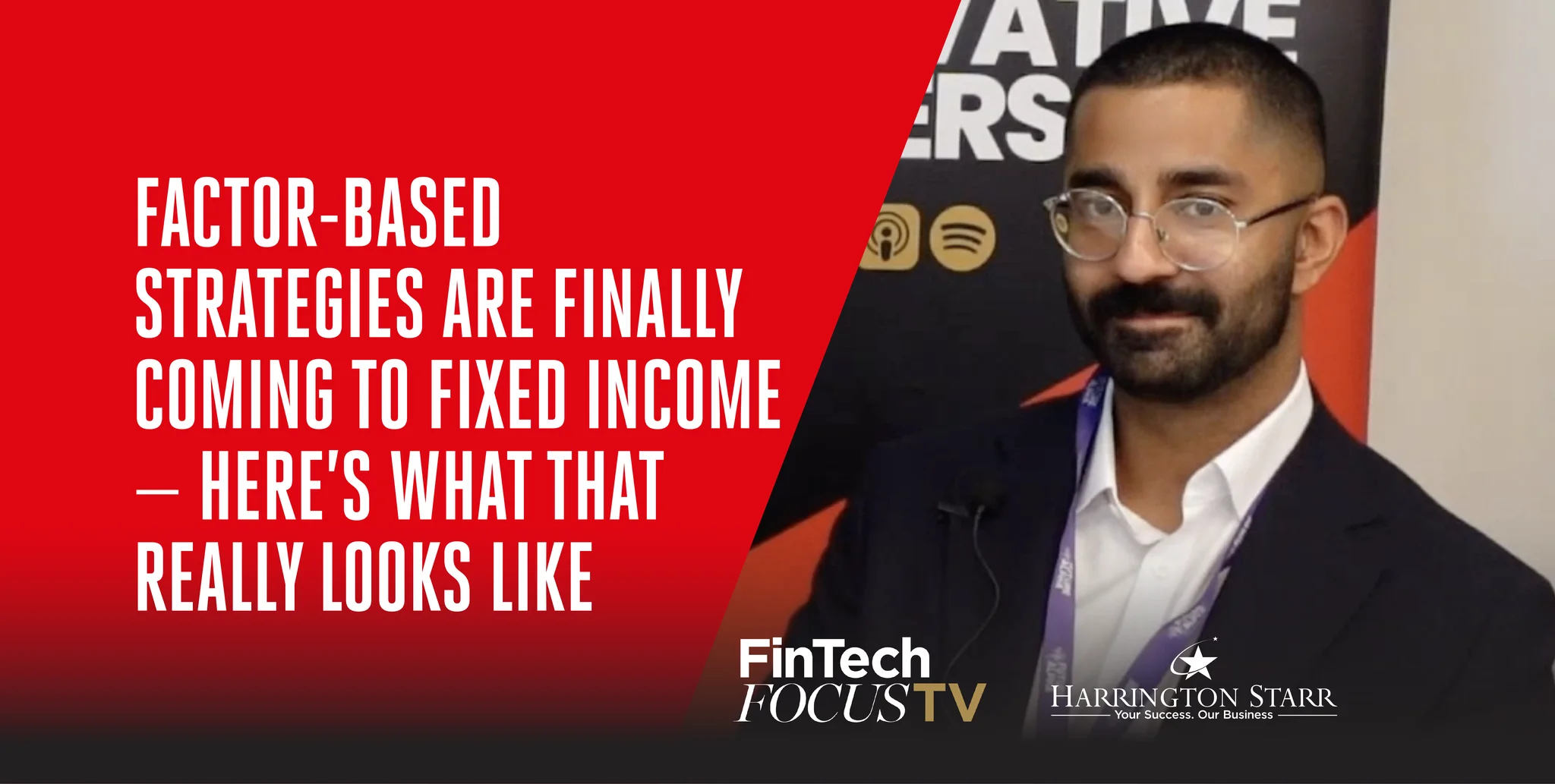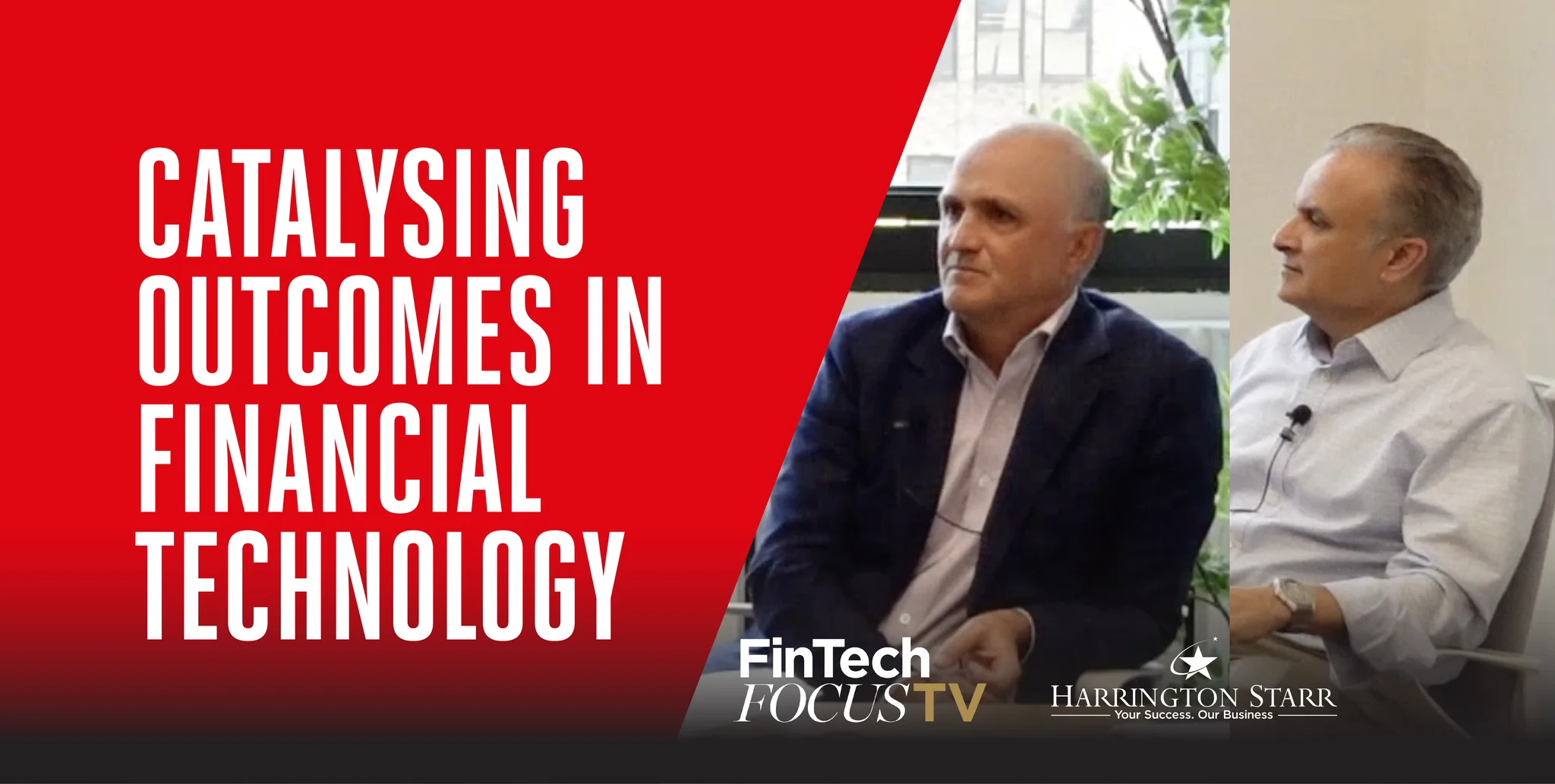Building the Future of Trading Technology
In this special episode of FinTech Focus TV, Toby welcomes back a familiar face, Scott Govoni, Regional Director at FIX Trading Community. The conversation dives into the community’s mission to modernise and standardise trading technology across global markets, the importance of collaboration, and a preview of one of the industry’s most anticipated events, the Americas Trading Conference. Together, they explore how FIX continues to drive efficiency, innovation, and engagement across the financial services and capital markets ecosystem.
Driving Collaboration in Global Financial Markets
Toby opens the conversation by expressing his excitement about reconnecting with Scott, noting that the fall season always signals the arrival of the FIX Americas Trading Conference. While Toby can’t make it to New York for the FIX event this year, he emphasises his admiration for the event’s consistently high quality, engaging agenda, and the role FIX plays in shaping the industry.
Scott responds enthusiastically, explaining that the Americas Trading Conference will take place on Thursday, October 30th in New York City, hosted at 605 Third Avenue. The event, he says, is designed for both FIX members and those in the wider community who are curious about the organisation’s work. It’s not just a conference, it’s an opportunity for professionals across the trading and FinTech ecosystem to come together, exchange ideas, and strengthen the shared infrastructure that underpins electronic trading worldwide.
One of the most anticipated sessions, Scott reveals, will be a fireside chat between Jim Toes, President and CEO of the Securities Traders Association (STA), and Jim Kaye, Executive Director of FIX Trading Community. The discussion, dubbed “The Jim Show”, will explore how these two influential organisations can collaborate to make global trading more efficient and effective.
As Scott puts it, “The STA is almost like the policymaking arm of the financial services industry, while FIX is the implementation arm.” When regulators introduce new mandates or reforms, the FIX Trading Community works to ensure the “electrical grid” of trading, the technology and data standards that keep markets running, can accommodate those changes seamlessly.
Why FIX Trading Community Hosts Industry Events
While many associate FIX with conferences and networking, Scott clarifies that the organisation is not an events company. Instead, these gatherings are a critical way to fulfil its mission: developing and maintaining open standards that improve efficiency in electronic trading.
The first reason FIX runs events like the Americas Trading Conference is to drive awareness and adoption of its standards and best practices. Although many in the industry know the FIX Protocol, the organisation’s remit extends far beyond that.
The second reason, Scott continues, is to encourage participation. Committees, subcommittees, and working groups form the backbone of FIX’s work, these are where the technical and regulatory challenges of trading are discussed and solved. For FIX to deliver on its mission, it needs a deeply engaged community contributing insights, expertise, and ideas.
Events like the Americas Trading Conference are therefore about more than presentations, they’re about education, collaboration, and community building. They connect people across regions and disciplines so that when new market issues or regulations arise, the FIX ecosystem can quickly form working groups and address them effectively.
Inside the FIX Americas Trading Conference: A Look at 2024’s Agenda
When Toby asks about the most exciting topics on this year’s agenda, Scott outlines an impressive programme. One of the central themes is 24/5 trading, reflecting the growing trend towards near-continuous market access. This panel will be moderated by industry veteran Larry Tabb, featuring representatives from Blue Ocean, Jane Street, and Symphony. The discussion will explore how technology and regulation are adapting to the rise of 24-hour market models, a crucial development in global capital markets.
Another major area of focus is digital assets, a topic that, Scott notes, is more relevant than ever. For years, the industry has speculated about the convergence of traditional finance (TradFi) and decentralised finance (DeFi), but in 2024 that conversation has shifted from theory to reality. Scott explains that regulatory shifts and growing institutional adoption have made digital assets a legitimate asset class that market participants can no longer ignore.
With regulatory “easement” in the United States and an evolving policy landscape globally, many firms are now asking where FIX fits within the world of digital assets. “There has to be some interoperability,” Scott says. FIX is working to ensure its standards can support the trading, settlement, and reporting of these new instruments. The goal is to ensure that the industry’s trusted technical foundation remains relevant as markets diversify and new asset classes emerge.
Exploring Market Structure: The Future of Lit and Dark Markets
Another fascinating session on the conference agenda centres on market structure, particularly the ongoing debate between lit and dark markets. Scott describes this as a 50/50 point, a moment when transparency, liquidity, and innovation must be balanced carefully to ensure fair and efficient trading.
This discussion exemplifies FIX’s broader mission, to foster open dialogue between participants and to use technology as a bridge rather than a barrier. By uniting voices from across the buy side, sell side, and vendor community, FIX helps ensure that new market structures serve the industry as a whole rather than fragmenting it further.
Artificial Intelligence in Trading: From Hype to Real-World Impact
Of course, no discussion in FinTech and capital markets would be complete without addressing artificial intelligence. As Scott points out, AI has become a recurring theme at almost every financial technology event, but FIX aims to bring a unique perspective.
At this year’s Americas Trading Conference, FIX will feature a buy-side-focused AI panel, moderated by Kevin Houstoun from Rapid Addition. The session will include representatives from four major buy-side firms and explore how asset managers are incorporating AI into their operations.
Scott explains that while the “holy grail” of AI-driven trading, where algorithms autonomously decide which stocks to buy or sell, may still be some way off, the buy side is already using AI extensively in operations, data management, and compliance. The discussion promises to shed light on how AI is being practically implemented to enhance efficiency and decision-making, rather than merely serving as a buzzword.
Toby reflects on how the AI conversation has evolved over the years. Having interviewed past panelists at previous FIX events, he recalls that the topic once felt hypothetical, but now, it’s becoming operational reality. The buy side, traditionally slower to adopt emerging technologies, is now embracing AI in meaningful ways. This transformation is reshaping how firms approach automation, analytics, and alpha generation.
Building a Stronger FIX Community After COVID-19
Toby notes that one of the things he has always admired about the FIX Trading Community is its ability to bring people together, and he points out how valuable those in-person interactions are. Scott agrees wholeheartedly, adding that networking and collaboration are essential to FIX’s continued success.
He also reflects on how the pandemic affected the organisation. “Coming out of COVID, it really did some damage in terms of having that ability to host events and create that sense of community,” Scott admits. For several years, FIX’s activities in the Americas were largely confined to New York City.
That began to change in 2024, thanks to Scott’s leadership. FIX introduced a series of regional meetings, half-day events held outside New York, to re-engage the broader community. These included sessions in Boston and Chicago, with plans to return to Toronto soon. These regional initiatives have been instrumental in rebuilding engagement, broadening participation, and fuelling interest in the larger Americas Trading Conference.
Attendance, Scott reports, is expected to rise by 15–20% year-on-year, reflecting a renewed appetite for connection, collaboration, and collective progress.
Making Trading Better: The Core Mission of FIX
Throughout the discussion, Scott continually returns to a simple but powerful message: “When you strip everything back, we’re here to make trading better, and who doesn’t want to make trading better?”
This philosophy underpins everything the FIX Trading Community does. From its working groups to its educational events, FIX exists to create an open, standardised, and efficient framework for electronic trading.
While it can sometimes appear that FIX is purely an events organisation, Scott emphasises that these gatherings are a means to an end. The real work happens within the community, in the working groups, subcommittees, and industry collaborations that solve real-world problems and deliver tangible improvements to market infrastructure.
It’s this combination of technology leadership and community engagement that has cemented FIX’s position as a cornerstone of modern financial markets.
How to Get Involved with the FIX Trading Community
As the episode draws to a close, Toby invites Scott to share how people can get involved. Scott encourages anyone working in electronic trading, from onboarding specialists to portfolio managers, to visit fixtrading.org. The website provides event information, membership details, and opportunities to join working groups.
FIX’s membership, he explains, thrives on diversity of perspective. The more viewpoints represented, across firms, geographies, and disciplines, the stronger and more resilient the community becomes. He also highlights sponsorship opportunities, which play a vital role in supporting FIX’s non-profit operations. “We don’t aim to make money,” he notes, “but we do need to break even so that we can continue to deliver these important events.”
Toby closes the episode by praising the Americas Trading Conference as one of his favourite events of the year. He credits FIX for its professionalism, inclusivity, and commitment to fostering meaningful discussions. “It comes down to that word, community,” he says.
Scott thanks Toby for the opportunity to share his insights and reiterates that everything FIX does, from its standards to its events, is about improving how markets operate. As the conversation wraps up, it’s clear that the FIX Trading Community remains one of the most vital forces in modern trading technology and financial market innovation.
The Power of Connection in FinTech and Capital Markets
This episode of FinTech Focus TV encapsulates what makes the FIX Trading Community such an influential presence in global markets. It’s not just about protocols or data standards, it’s about people, collaboration, and shared purpose.
As the industry continues to evolve, driven by AI, digital assets, and 24-hour trading, the need for trusted, standardised systems has never been greater. FIX’s work ensures that innovation in FinTech and capital marketshappens on a foundation of transparency, efficiency, and cooperation.
For FinTech professionals, technologists, and financial institutions, Scott’s message is a reminder that collaboration isn’t just beneficial, it’s essential. Whether through joining a working group, attending an event, or sharing insights with peers, participation in communities like FIX is what drives the industry forward.
At Harrington Starr, we see this same principle at work in FinTech recruitment, success comes from building connections, understanding challenges, and helping businesses grow through talent and innovation. This episode highlights that same community spirit, showing how collaboration continues to shape the future of trading technology.






